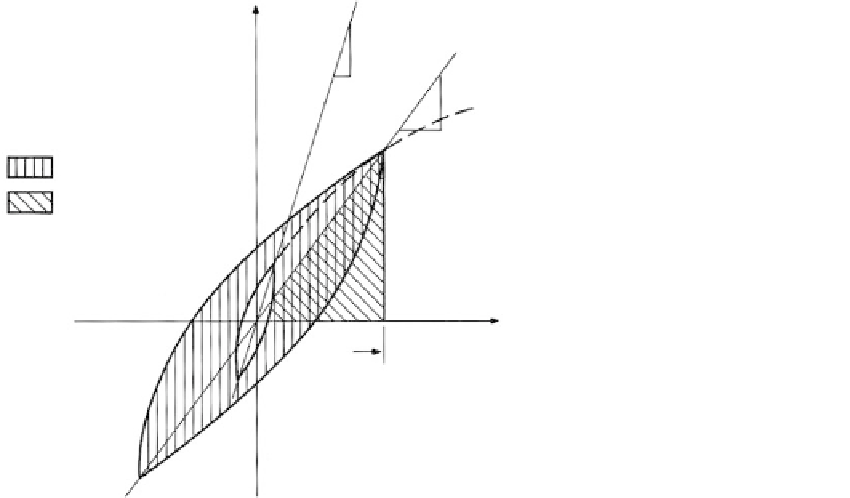Environmental Engineering Reference
In-Depth Information
cycles of a similar amplitude and the stress-strain curve becomes a closed loop that can be
defined by two parameters as shown in Figure 3.33:
Shear modulus
(
Section 3.5.2)
is defined by the average slope and has been found
to decrease markedly with increasing strain amplitude.
●
Internal damping
refers to energy dissipation and is defined by the enclosed areas
as shown in the figure (damping ratio
●
λ
).
In
clay soils
, if strain amplitude is large there is a significant reduction in the undrained
strength.
In
cohesionless soils
, pore pressure increases almost linearly with the number of cycles
until failure occurs. The simple shear device used for dynamic testing in the laboratory is
shown on
Figure 3.34.
Liquefaction
occurs when pore pressures totally relieve effective
stresses (see
Section 11.3.3).
Field Occurrence
Wave forces against offshore structures cause low-frequency cyclic loads. Seismic waves
from earthquakes cause low- to high-frequency cyclic loads as discussed in
Section 11.3.2.
At-Rest, Passive, and Active Stress States
At-Rest Conditions (K
0
)
The coefficient of lateral at-rest earth pressure has been defined as the ratio of lateral to
vertical stress,
K
0
σ
h
/
σ
v
(Equation 3.15).
For
sands and NC clays, K
0
is normally in the range of 0.4 to 0.5 and is a function of
φ
in
accordance with
K
0
1.0
sin
φ
(3.35)
Definitions: For G
2
G
1
G
2
Shear modulus, G =
1
1
G
2
(1)
A
L
Damping ratio, D =
4
π
A
T
1
AL = Loop area
AT = Triangle area
(1) =
Locus of hysteresis
loops tips
Shear strain
ζ
FIGURE 3.33
Hysteretic stress-strain relationship from
cyclic shear test at different strain
amplitudes. (
After USAEC,
National
Technical Information Service
Publication TID-25953, U. S. Department
of Commerce, Oak Ridge National
Laboratory, Oak Ridge, TN, 1972.)
ζ
2


